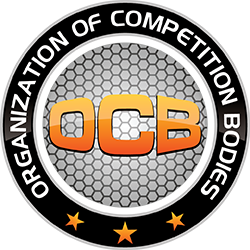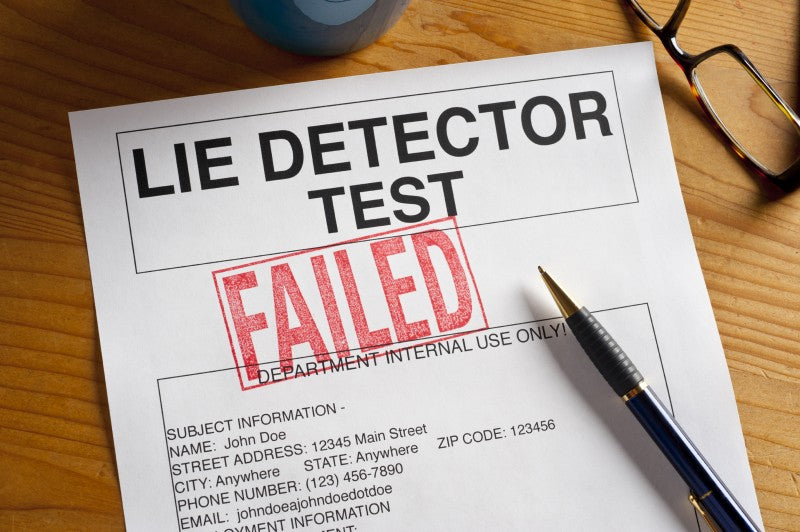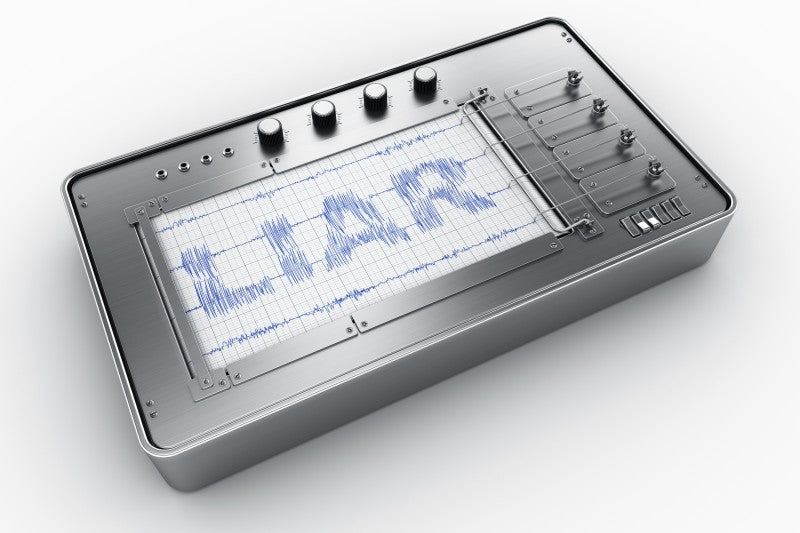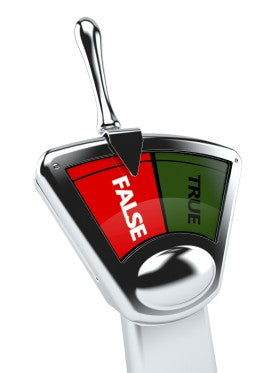
The Role of Polygraph Testing in Physique Competition
Some people question whether something such as urine testing could be used instead, arguing that the polygraph isn't admissible in court so has no place in practice. It has also been said that these shorter screenings that are done for tournaments like bodybuilding aren?t ?real? polygraph tests. Other polygraph detractors try to make the point that polygraph testing isn't a viable choice for physique competitions because fatigue can impact testing. Of course, we also hear the claim that people can easily beat a polygraph test.
Let's take a closer look and see if there's any merit to these common claims.
Urine Testing as an Alternative?
 OCB/NANBF/IFPA rules are based around durations , meaning you are not to have used anabolic steroids for seven years prior to an event. With urine testing, the furthest back substances can be detected is about six months, and in mostly all cases detection time is much less.
OCB/NANBF/IFPA rules are based around durations , meaning you are not to have used anabolic steroids for seven years prior to an event. With urine testing, the furthest back substances can be detected is about six months, and in mostly all cases detection time is much less.An Internet search can reveal what detection times are common for various substances. Most steroids become undetectable in urine after a few weeks - some oral steroids can no longer be detected after as little as a few days. Additionally, urine testing cannot detect growth hormone usage.
On the other hand, with the polygraph test, time periods such as seven years can be included when structuring the test questions and tests can incorporate growth hormone use or any other substances that are either not detectable or aren?t included in urine testing.
Not Admissible in Court of Law?
Contrary to popular belief, polygraph tests can be admissible in court. Nineteen states can allow them, and at the federal level judges can decide whether or not to allow them at their discretion as long as they meet the required criteria (testimony of how the polygraph works and scientific research presented by an expert, and whether the exam was done in compliance with generally accepted standards within the polygraph community).Length of Polygraph Tests
Do you know how much time an examinee actually spends connected to the polygraph machine for pre-employment, post-conviction sex offender, criminal related and infidelity tests? About 10 minutes or less.Most people think a real polygraph test takes an hour or more. So why less than 10 minutes on the machine for, say, a 60-90 minute test? The pre-interview takes most of the time. Depending on the purpose of the test, examinees may have to answer questions and supply details about their past employment, criminal activity, sexual conduct, drug use, medical history, etc. A pre-employment test pre-interview typically takes about an hour.
The more people have to explain about their pasts, the longer the interviews go. With bodybuilding, topics such as past employment, criminal activity and sexual conduct don't come into play. And for drug use, only substances banned for competitions have to be covered.
I actually use the same question format for physique competitions that is used for pre-employment screenings done for Maricopa County in Arizona (and many other agencies), just for one issue though as opposed to six. Fewer issues mean less time is needed. So, the shorter tests for bodybuilding are because much less information has to be covered beforehand and because only one issue has to be addressed.

Physical tactics used to try to fabricate a response have all but been neutralized by the addition of the movement sensor cushion.
Fatigue Sways Polygraph Accuracy
Some people claim polygraph testing shouldn't be used for physique competition because fatigue can prevent subjects from being accurately tested, and that all the dieting and training competitors do leading up to a contest results in them being fatigued. If this was true polygraph probably couldn't have been used for competitions all across the United States for over thirty years now.Little, moderate, or even high fatigue doesn't mean one can't be accurately tested (meaning chart tracings are erratic to the point of not being usable). Actually, in my experience I haven't had a single case where this has been so.
Let's say there was a case of such extreme fatigue that a subject could not successfully be tested. Well, if he/she can't be tested, he/she can't pass, which is a requirement to get on stage. So he/she wouldn't be able to compete.
How the Polygraph Works
Before addressing claims about how beating the polygraph is easy, let's cover how the polygraph actually works. It works because of the autonomic nervous system (ANS).The ANS cannot be controlled by an individual. it's involuntary. It includes activities such as organ functions, gland activity, heart rate, digestion, salivation and respiratory rate (although breathing works in tandem with the conscious mind it is partly involuntary).
There are two divisions of the ANS; sympathetic and parasympathetic. Basically, the sympathetic nervous system (SNS) is the fight-or-flight response. When faced with a threat, whether physical or mental, the SNS can go into action and increase the heart rate, blood pressure, sweat gland activity and breathing rate. Lying is a mental threat (the fear of being discovered), and reactions to it can't be controlled.
The parasympathetic nervous system (PNS) basically works on bringing everything back to normal. The body strives for homeostasis. When the ANS becomes stimulated, the PNS quickly reacts to bring everything back to normal.
Components of a Polygraph Test
 The polygraph machine consists of four main components; pneumo, cardio, electro dermal activity (EDA) and a movement sensor.
The polygraph machine consists of four main components; pneumo, cardio, electro dermal activity (EDA) and a movement sensor.Pneumo tubes (pneumo is short for pneumograph - a device for recording velocity and force of chest movements during respiration) are placed around the chest to monitor breathing rate and respiratory movement. Cardio is a pressure cuff that typically goes on the upper arm (but can be used in other locations) that monitors pulse rate and relative blood pressure changes.
EDA uses metal tabs on fingers (or electrodes on palms or other locations) and monitors skin resistance to electricity through sweat pores (most polygraph devices record resistance, some capture conductance in addition). And the movement sensor is a cushion that an examinee sits on during testing that detects movement (there are also movement sensors for the jaw, feet and arms, but they aren't widely used).
A photoplethysmograph can be incorporated into polygraph testing also. It clips onto a finger and senses when blood rushes from the extremities to the core of the body. It is not widely used either as only approximately 10% of subjects who have a reaction to a question register change on this device.
The Pre-Interview
The pre-interview process plays an important role in polygraph testing. This is when relevant background information is addressed, test questions are formulated, clarifications are made (if needed), and concerns are catered to, if applicable.It lets examinees know what's coming and gives them the opportunity to ask any questions or address any concerns they have so they can put their minds at ease before the actual test begins.
Polygraph Tests & Questions
There are several types of tests that can be used. There are screening tests and specific issue tests. And themes being tested for can be single-issue, multi-faceted, or multi-issue. Basically what all that means is different combinations of questions are better suited for various situations.For any given test type, a series of different types of questions catering to the purpose of the test are structured. They are aimed at addressing a number of things, such as orienting responses, restoring subjects to their normal states, identifying subjects who may be distracted by outside issues, the issue being tested for, and establishing baseline reactions.
Polygraph Testing
Once the pre-interview is completed, a test type is selected and the questions it will utilize are formulated. Then it's testing time.During the actual test, the machine components produce tracings on a "chart" that an examiner can evaluate. When a threat is introduced, such as fear of detection when lying, the body will involuntarily react.

Contrary to popular belief, polygraph tests can be admissible in court. Nineteen states can allow them, and at the federal level judges can use their discretion.If an examinee is guilty of something, such as having used a banned substance for a physique competition, the chart tracings can show changes in blood pressure, electro dermal activity and/or breathing when questions about the issue being tested for are asked. If changes during those questions are significant enough, in comparison with the rest of the test, a subject is said to have had a significant response, or that deception was indicated. This is determined by scoring charts, which is based on the ratio of reactions between certain questions.
What Does "That" Question Have to Do With Competition?
Some questions are used that seem like they have nothing to do with the subject being tested for. If testing for a physique competition, an example could be, "Have you ever stolen anything from someone who trusted you?" This is an example of what is referred to as a comparison question or control question.These questions are vague and broad intentionally. They are questions that bring up actions that probably everyone at some point in their lives has done. The relevance of these types of questions is that someone who hasn't used any banned substances would be more concerned with them.
The focus of someone who has used banned substances would be on the questions pertaining to banned substance use (relevant questions). Subjects react to what is the greater threat to them. When there's more of a reaction to relevant questions there's a problem. When there's more of a reaction to comparison questions there isn't.
Beating the Polygraph?
 People hear or read about polygraph tests being able to be beaten with ease and seem to believe it based on hearsay alone. Claims are made that physical tactics, mental tactics, or drugs can be used to beat the test. Examples of physical tactics would be altering breathing, tightening of the sphincter, putting a tack in your shoe, biting your tongue or cheek, etc.
People hear or read about polygraph tests being able to be beaten with ease and seem to believe it based on hearsay alone. Claims are made that physical tactics, mental tactics, or drugs can be used to beat the test. Examples of physical tactics would be altering breathing, tightening of the sphincter, putting a tack in your shoe, biting your tongue or cheek, etc.First, somebody has to be able to identify which questions are which and make deceitful attempts not only for the right questions, but at the right time too. There is a specific window of time around questions that come into play and were in that window something occurs can provide information of different types. And there are ten different types of questions - some designed to confuse an examinee who tries to 'beat' the test.
And for each type of question, there is an infinite number of ways to construct it. Trying to fabricate a response on a wrong question, hesitating even slightly on the right ones, or not pulling things off precisely raises a red flag with an examiner and examinees bring a lot more scrutiny onto themselves as a result.
Changes in breathing, tensing of the arm the blood pressure cuff is on, and pushing down on fingers or movement of the hand that the EDA tabs are connected to are the easiest things for examiners to spot. Even the authors of The Lie Behind the Lie Detector, George W. Maschke, and Gino J. Scalabrini, who also operate AntiPolygraph.org, have written in their manual,
"We Americans have thriving folklore about how to beat a polygraph test. You may have heard that you can pass by taking drugs such as meprobamate, by rubbing antiperspirant on your fingertips, or through meditation or hypnosis, or by wiggling your toes, or flexing your arms, or coughing. Forget these. They are prescriptions for failure."
Physical tactics used to try to fabricate a response have all but been neutralized by the addition of the movement sensor cushion. The movement sensor cushion is a pad the examinee sits on during the test. Even the slightest movement or tensing up registers on the sensor and gives a cheater away. There's no way one can tighten his/her glutes/sphincter and it not show up on the chart tracing.And it's very difficult, if not impossible, for one to even curl their toes or push them down without movement registering on the cushion. Even biting down can show up on the movement sensor.
The innocent have nothing to focus on but answering yes or no. The guilty who try to answer a question while also trying to perform some other task, such as biting down or attempting mental counter measures (counter measures are things a subject does in a deliberate effort to defeat, distort or alter a polygraph test), often register changes in chart tracings. And that happening at a specific time tips examiners off to possible countermeasure attempts.
In addition, the intensity has to be pretty precise.
A little too much of a cheat effort can result in a reaction that's too good to be true. What does that mean? If you bite down on your tongue too hard, as an example, the reaction shown on the polygraph chart will be a little too much to be believable. Alternatively, not biting down hard enough won't cause a reaction at all.

Many people wonder if being nervous will affect their polygraph results. It won't. If it did just about everyone would fail.How difficult are these things, really, you may be asking? Studies have shown the use of countermeasures by deceptive participants did not affect polygraph examination outcomes (Honts, Raskin, Kircher, & Hodges, 1988), (Otter-Henderson et al., 2000), and (Honts, Amato, & Gordon, 2001). There was also a study done in the eighties that showed examiners could not consistently and correctly detect countermeasures attempted, but that was before the seat sensor pad. It would be interesting to see if the same holds true now.
People often hear drugs - sedatives such as Valium, for example - can be used to beat a polygraph test too. It's usually pretty obvious to an examiner when a subject comes in under the influence of these drugs. But even beyond that, studies have shown the use of substances, such as Valium, do not impact test findings.
Another common claim is that if you can convince yourself you didn't do something that you did, you can beat the test. If you really think about this claim, do you believe that's possible? If it were the polygraph would be useless.
Nervousness
Many people wonder if being nervous will affect their polygraph results. It won't. If it did just about everyone would fail.The polygraph monitors changes. If someone is nervous, they're nervous the whole time. It's not like they're nervous one second, then not, then all of the sudden nervous again and only at specific times.
False Positives
A false positive is when someone is said to have not passed a polygraph when they are in fact innocent. There are many factors that come into play with polygraph testing. They include formation of proper questions (both content and wording), semantics (words mean the same to both the examiner and examinee), chart interpretation, awareness of outside factors that may be affecting readings (outside noise, a cough, etc.), premature ventricular contractions (skipped heartbeats), examiner etiquette, respiratory blood pressure fluctuations, outside issues of great concern (ex. death of someone close), and many others. A competent examiner will be able to identify what's going on and be able to resolve any issues to minimize the chances of a false positive. Unfortunately, this isn't always the case, false positives can occur, and innocent competitors can be denied competing.
A competent examiner will be able to identify what's going on and be able to resolve any issues to minimize the chances of a false positive. Unfortunately, this isn't always the case, false positives can occur, and innocent competitors can be denied competing.A real-life example may serve well here. There was one situation where a competitor had used steroids ten years before the contest he was entered in. The eligibility guidelines were he couldn't have used them within seven years of the contest. The competitor did not disclose prior use to one examiner prior to testing.
As a result, one of the questions formulated was, "Have you ever used any anabolic steroids?" The competitor had a reaction and ended up not passing the test. When tested by another examiner, prior use was disclosed and the question used was, "In the past seven years, have you used any anabolic steroids?" The competitor had no reaction and ended up passing this test.
The first test is an example of a false positive that was due to:
- The competitor withholding information that weighed on his mind during the test, and
- The wording of a question.
Behavior
There's one last aspect to polygraph testing, and that's subject behavior. This includes body language, mannerisms, how they respond to questioning and what they say in those responses.Many examiners have law enforcement experience. Those who don't receive training in behavior analysis during polygraph schooling. It's almost a night to day comparison between a guilty and innocent party's behavior.
All the information in this article aside, many examiners can tell when there may be an issue with a subject from almost the moment they walk into the testing area. And when they sense this, be sure their attentiveness goes on high alert and small details are even more likely to be noticed.
In Closing
Ultimately, the accuracy and effectiveness of polygraph testing is, and I can't stress this enough, highly dependent on the competence of an examiner. Knowledgeable, skilled examiners are more apt to detect countermeasure attempts and avoid false positives. Those not as skilled are more susceptible to being beaten by cheaters or producing false positives.Bodybuilding and drugs have been intertwined for over forty years. Drug use in bodybuilding continues to be prevalent. But for those who don't wish to jeopardize their health and break the law by using illegal performance-enhancing drugs, and don't want to be at a disadvantage by going up against people who have used them, there are drug-free organizations that conduct drug tested shows.
And while there may not currently be an ironclad method for screening out those who try to cheat at drug tested shows, the polygraph may well be the best available option. It's existence alone provides valuable service as being a deterrent and keeps some away who may otherwise try to enter natural contests. It can cover longer periods of time, can incorporate growth hormone use, and, despite common claims, can't be easily beaten.






